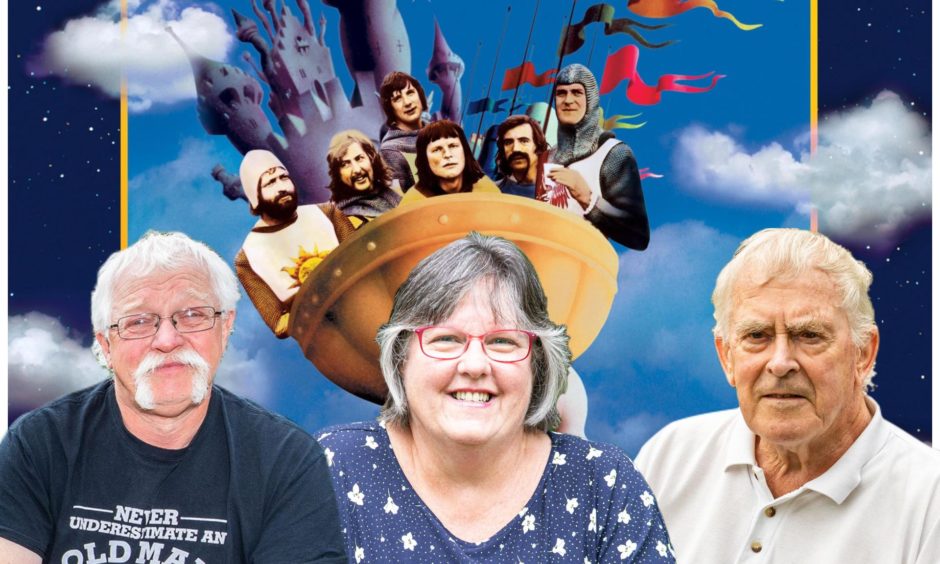
Monty Python and the Holy Grail was released in the summer of 1975.
Most scenes were filmed in Scotland – particularly around Doune Castle in Stirling – with local folk playing peasants, knights and soldiers.
The 1975 film, which parodied the legend of King Arthur’s quest for the Holy Grail, was largely filmed on location in Scotland, using the fantastic historical sites and breath-taking scenery to great effect as the backdrop to the farcical and surreal humour.
The film’s initial budget of around £200,000 was raised by convincing 10 separate investors – including rock bands Pink Floyd, Led Zeppelin and Genesis – to contribute £20,000 apiece.
It was written and performed by the Python team of Graham Chapman, John Cleese, Terry Gilliam, Eric Idle, Terry Jones and Michael Palin, and directed by Gilliam and Jones.
Holy Grail grossed more than any other British film exhibited in the USA in 1975.
Bring out your … students
The film required hundreds of extras to take on the roles of peasants, soldiers and knights.
Stirling University invited 175 students to take part in a Python battle scene in its May 20 1974 newsletter.
The advert stated: “While pay for the day is rather humble at £2 a head, transport to and from the film set is free, as is the food, including elevenses, hot lunch and tea.
I remember chatting to Cleese and Chapman about their favourite Python sketches and Chapman saying he loved Biggles.”
Harry Doy
“An added attraction, of course, will be a bunch of crazy antics coupled with the fact that the film is a full feature length film – going out on international release.
“Transport, in the form of buses, will be leaving from the back of Pathfoot at 8am (on May 25) – yes, that early, so that the makeup and costume girls can do a good job on you.
“Who knows, this could be your chance for stardom!”
‘I hit John Cleese on the head with a cabbage’
Harry Doy’s father ran the post office in Doune when Holy Grail was being filmed.
He recalls spotting notices posted all over the village asking for locals to take part.
“Like many 14-year-old boys, I was a huge Python fan and stuck my name down,” says retired civil engineer Harry, 60.
“They were looking for adults but I managed to get little jobs helping out and eventually persuaded the crew to let me dress up as a peasant for some scenes.
“I was small and light so I got into a cherry picker for the ‘Bring Out Your Dead’ scene and began hurling food down from the castle battlements.
“It was then that I clocked John Cleese on the back of the head with a cabbage! Sadly, that bit wasn’t in the film!”
Harry also recalls being involved in a food fight with the cast and crew.
They had asked for doughnuts but when they received dough rings, the Scottish alternative, they got rather antsy.
“They wanted jam and started shouting: ‘Where’s the jammy bits?’ They then started throwing all sorts of food around. It was messy.”
While Harry was dressed as a peasant, the cast, who had become fond of him, often took him to the pub.
“They got me a bottle of cider at the Woodside Hotel from time to time.
“I remember chatting to Cleese and Chapman about their favourite Python sketches and Chapman saying he loved Biggles.”
Then there was the time that Cleese assaulted a salmon caught by the young Harry.
“I loved fishing in the River Teith and caught an 11 pound salmon one day,” he recalls.
“I carried it up to the castle, looking for a bit of string to tie it with, and Cleese came out in full knight’s gear and asked what I was doing with a fish.
“He glowered at it and then punched it before selling it off to a producer.”
Harry also recalls a man who rented the Python cast and crew a house being gifted with a “big bag” of outtakes not used in the final cut.
Unbelievably, he burned them! Can you imagine what those would be worth today?
Ultimately, the experience of being involved in filming was a dream come true for Harry, who had been idolising the Python troupe for years.
“They were really nice, friendly people and it was so fabulous to be included,” he says.
Killed by the rabbit
Harry was lucky enough to accompany the cast up to a cave near Killin where the killer rabbit scenes were being filmed.
A real white rabbit was used and covered with red liquid to simulate blood. It was switched with puppets for its killings.
Harry stood in for Eric Idle, wearing his knight costume for a rabbit fight sequence.
“You see the fake, stuffed rabbit being pulled along a wire and going for my throat,” he says.
“It had turned into a vicious, big-toothed beast that was attacking me and flying for my neck.
“You then see three dead bodies. One of them is mine, and the rabbit is sitting on my chest at the mouth of the cave.”
Most of the time we just lined up at the top of a hill in ramshackle fashion and charged down it recklessly, shouting war-like noises.”
Kevin Mulvey
Doune-based Jack McGregor, 77, was the village policeman when filming took place.
He faced a barrage of surprises on a daily basis for four weeks.
“You’d see knights in shining armour falling out of the pub at lunchtime, or people randomly drifting out of the woods,” he recalls.
“But the most outstanding incident for me was linked to the wooden rabbit which was hurled from the battlements of Doune Castle.”
Jack had popped home from lunch when his wife told him the film’s producer had called and needed him to contact him urgently.
“I gave him a ring and he asked me what the rules were for abnormal loads,” recalls Jack.
“I told him they needed 24 hours’ notice in writing to the chief constable. He said, ‘oh dear, we want to film this afternoon. What if it’s less than a mile?’
“I needed to find out what this abnormal load was and when he replied, ‘a rabbit’, I told him I didn’t have time for more nonsense and asked what was unusual about this particular rabbit.
“He told me: ‘It’s made of wood, it’s 12ft wide, 15ft high and runs on wooden wheels’.”
Doune Castle stars in Monty Python classic
Well used to the antics of the Python crew, Jack finished his lunch and drove to the Woodside Hotel in his police mini van to see what the commotion was about. There, he spotted the huge wooden rabbit.
“I escorted it down the road for a mile to Doune Castle with my blue lights flashing. It was ridiculous!” he says.
Another scene which sticks in Jack’s mind is inside the castle. “A knight bursts through the door to find two or three ladies dressed in full medieval regalia, with wimples and everything.
“They looked as if butter wouldn’t melt in their mouths but they got a fright at the knight and one lady exclaimed: ‘oh sxxx’. It was right out of keeping with what a lady might say!”
Dave Calder was 22 when the Python crew showed up at his house near Doune asking if they could borrow one of his family’s horses for a scene.
“We had a little previous experience of how animals got treated in some films, so we politely declined,” says Dave, who now lives in Wiltshire.
“They were persistent and initially it was agreed that one of our horses – called Border Knight – would be loaned and a friend was going to ride him.
“During filming a day or so later, some shots were taken but it became apparent our friend wasn’t strong enough to wield the ‘sword’.
“It was suggested that instead, I should ride the horse at Doune Castle.
“I was dressed in a chain mail suit, which was knitted, and painted a dull silver colour. I also had some fake armour and a large helmet with only a small hole cut out to allow me to see where I was going!
“The plan was for me to gallop past the actor, swing the sword, and as I passed, to squeeze out some fake blood (the sword was made with an open channel down one edge, with a tube attached for the fake blood).
“This was deemed too dangerous, so I had to do it from a standing start.
“I was asked to hold the sword on the actor’s shoulder and to draw it across his neck as I moved away.
“I did as asked, but I didn’t notice that I had turned the sword in my hand, and the rough edge was against the actor’s neck. So some liquid was spilled!”
During action shots of Dave galloping around in tight circles, the horse skidded on the grass and fell, but Dave, who was blinded because of the helmet, slid off and rolled away, to avoid getting trampled.
Unfortunately, in rolling, he knocked over the camera.
“In the film, I am seen, riding a horse, and cutting off the head of the historian!” he says.
“It’s the only scene where a horse is used.”
The production team had originally wanted lots of real horses to be used, but the tiny budget could only stretch to one.
Border Knight was fairly famous. Dave’s sister, Isobel Ripley, won several major competitions on him and he appeared in a TV advert for Bluebell matches.
Other knights mimed horse riding while porters trotted behind them banging coconut shells together.
The joke was derived from the old-fashioned sound effects used on radio shows to convey the sound of hooves clattering.
This was later referred to in the German release of the film, which translated the title as Die Ritter der Kokosnuß (The Knights of the Coconut).
Coconut shells are sold in the castle shop, for tourists to replicate the sound.
Memories of the Python cast and crew…
The Python team used Gwen MacKenzie’s grandfather’s workshop to film a scene.
“My grandfather was a joiner and his workshop was near Doune Castle,” says Gwen, 59.
“The Python crew paid him for the use of his outside work place.
“They used it for three days and he got paid a bottle of whisky!”
Retired district nurse Gwen remembers her granddad moaning about the “terrible mess” he was forced to clean up after they left.
“They made it very muddy so he was a bit disgruntled with them all! It was for the scene where they are bringing out the dead.”
Gwen was only 14 years old but she remembers the scene where the knight’s limbs are chopped off being filmed in the woods where she played.
“All us youngsters thought it was hilarious!” she says. “Whole summers were spent in the woods – it was our playground and we had gang huts there. It was all very exciting.”
The crew used a room in Kenneth Lauder’s relatives house to work on make-up, costumes and editing.
“My wife’s gran can be seen in the witch scene wearing a white headdress,” says Kenneth.
“But the story is that after they left, my wife’s father and grandfather swept up all the film cuttings and put them on a bonfire.”
Liz Mackie worked at the Woodside Hotel where the Python crew were staying.
“I often made them tea and coffee when they returned. They were a great crowd of guys,” she recalls.
Keith Masson and his pals were paid “a few bob” to hurl stuffed cows and sheep over Doune Castle’s battlements.
Retired teacher Kevin Mulvey was a second year student at Stirling University who played a soldier in the film.
“We got dressed up in medieval garb and were handed out ‘weapons’.” he says.
“Mine was just a long stick, and I was a pike soldier, I suppose.
“Most of the time we just lined up at the top of a hill in ramshackle fashion and charged down it recklessly, shouting war-like noises.
“There was much tumbling and rolling about. In the film, this resulted in one elongated battle scene and we looked, as intended, like the most rag-tag and ill-disciplined army ever assembled.”
Kevin, who lives in Canada, can be spotted next to a police van for three seconds – “the sum total of my inauspicious movie career”.
Duich McKay was in one of the battlefield charge scenes on Sheriffmuir.
“I was only 14 and I’d been hanging around the set all day,” he says.
“They fitted me up with chain mail and I ran down the hill with loads of others.
“At one stage, a scene was interrupted by a plane flying overhead. The director looked up and said: ‘Bugger off, Biggles’!”
Karen Fox’s great-uncle, Alpine McAlpine, was one of the knights who rolls the Trojan rabbit up to the castle gates then runs away.
“If you check the credits at the start of the film, you’ll find him listed as Alpini McAlpine,” she says.
“Apparently they thought his name was a joke and couldn’t be right. He was one of the youngest of 13 kids and apparently my great-gran ran out of names.”
John Cleese talked openly about his “miserable” experience filming Holy Grail on the American show Late Night with Seth Meyers.
He said: “It was Scotland in April and the weather in Scotland is really bad except for two weeks in September.
“We were just miserable. We were wet, we got on the mountainside with our strange chain mail and knitted string and after about 10 minutes it would start to rain.
“We could only afford about three umbrellas.”
It wasn’t all bad, though.
Cleese also remembers discovering a French Burgundy in the Woodside Hotel that brightened up his life.
In his two-part TV series, Wine for the Confused, he revealed: “The only thing that stopped me killing myself was a restaurant, where I discovered, for the very first time, French white burgundy, which is made entirely from the chardonnay grape.
“It persuaded me to go on shooting the movie instead of shooting myself.”
Doune residents remember that Cleese dined daily at the Woodside, and was enthusiastic about its offerings.
Jacqueline Ross, whose mother-in-law Violet ran the hotel with her husband at the time, remembered Cleese as a loner who didn’t appear to be getting on with his co-stars.
“Quite often he’d sit on his own and it seemed as if he wasn’t speaking to the others and didn’t want to be there,” she said.
“In between shots of the film he’d lie flat on his back with his arms on his chest for an hour at a time and wouldn’t speak.
“But at least my father-in-law was a former waiter and did have a liking for wine and kept his cellar well stocked.”
Where was Monty Python and the Holy Grail filmed?
Monty Python and the Holy Grail was mostly shot around Doune Castle, Glen Coe, and Castle Stalker in Argyll and Bute.
The Cave of Caerbannog – home to the killer rabbit – was actually a cave four miles from the village of Killin, outside the Tomnadashan mine.
Arnhall Castle near Stirling was used for a scene in which a historian talks to camera, while other castles used were Kidwelly Castle in South Wales and Bodiam Castle in East Sussex.
The climatic battle scene was filmed on Sheriffmuir on the slopes of the Ochil Hills.
The Bracklinn Falls, a series of waterfalls near Callender, were used in several scenes.
At the start of “The Tale of Sir Robin” scene, there’s a slow camera zoom in on rocky scenery. This is actually a still photograph of the gorge at Mount Buffalo National Park in Victoria, Australia.
Other scenes are filmed at Epping Forest in Sussex.
Place of pilgrimage for fans of Monty Python and the Holy Grail
Doune Castle, which featured as Swamp Castle, Castle Anthrax and Camelot in the film, is a place of pilgrimage for Python fans.
The 14th Century castle is the setting of many unforgettable moments, such as the French taunters and the wedding scene.
It has a room dedicated to Monty Python and the Holy Grail and its guest book was signed by Michael Palin and Terry Jones when they revisited the area to produce a DVD version with extra footage.
Since 2004 there has been an annual Monty Python Day in September held at the castle with many famous scenes recreated and video screenings of the film.
The castle itself is more or less an empty shell but with there’s an audio commentary voiced by Terry Jones of the Monty Python gang, so it’s sure to be an entertaining visit.
It was also used as the Winterfell location in Game of Thrones, and in Outlander.
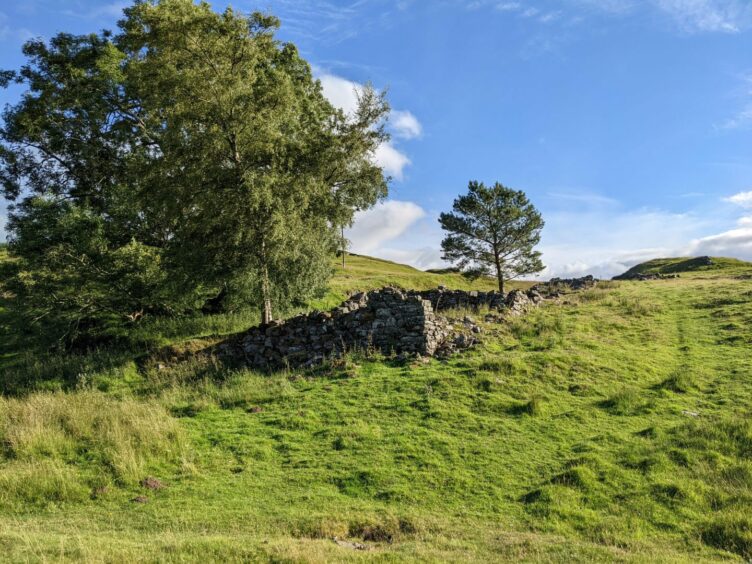
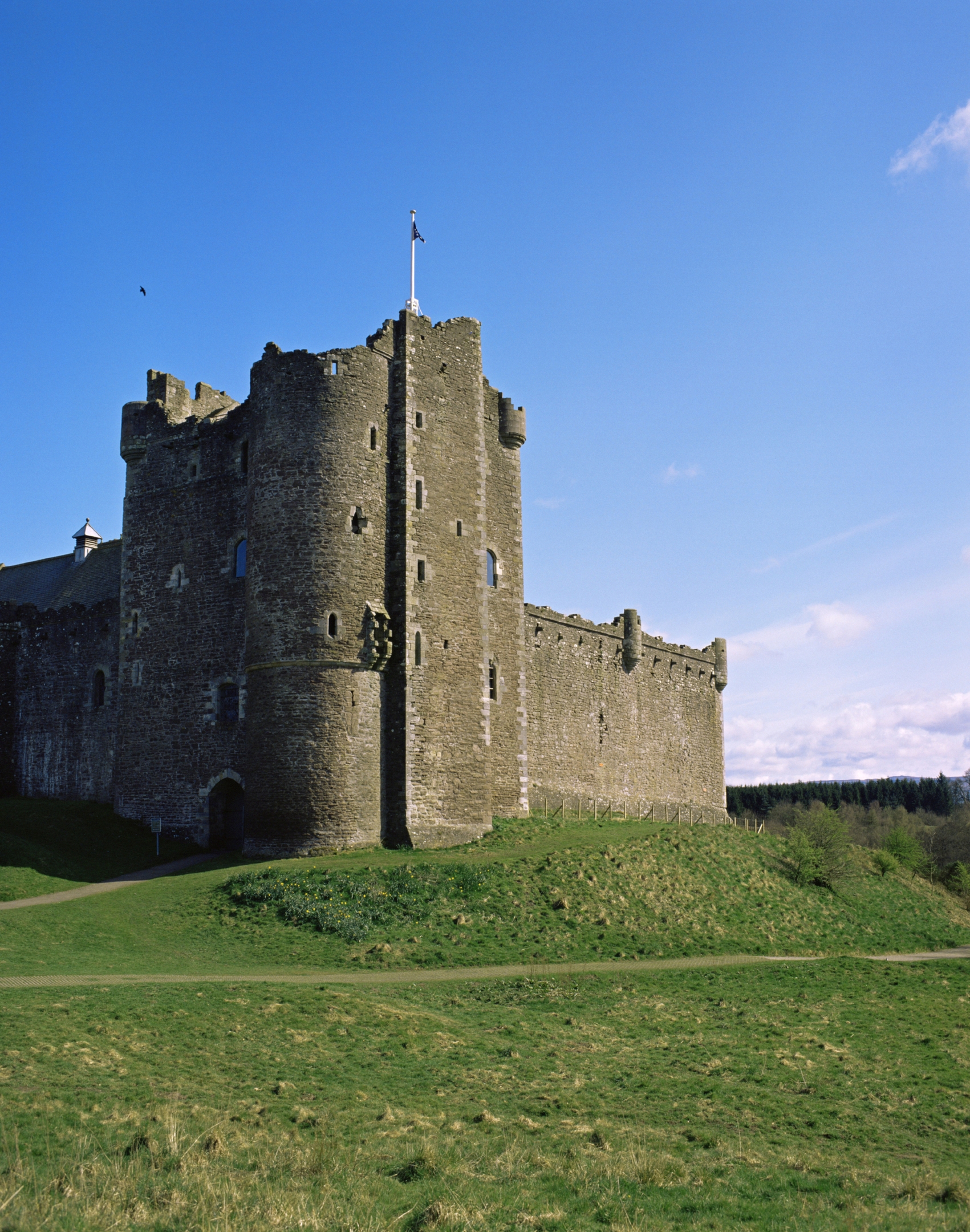
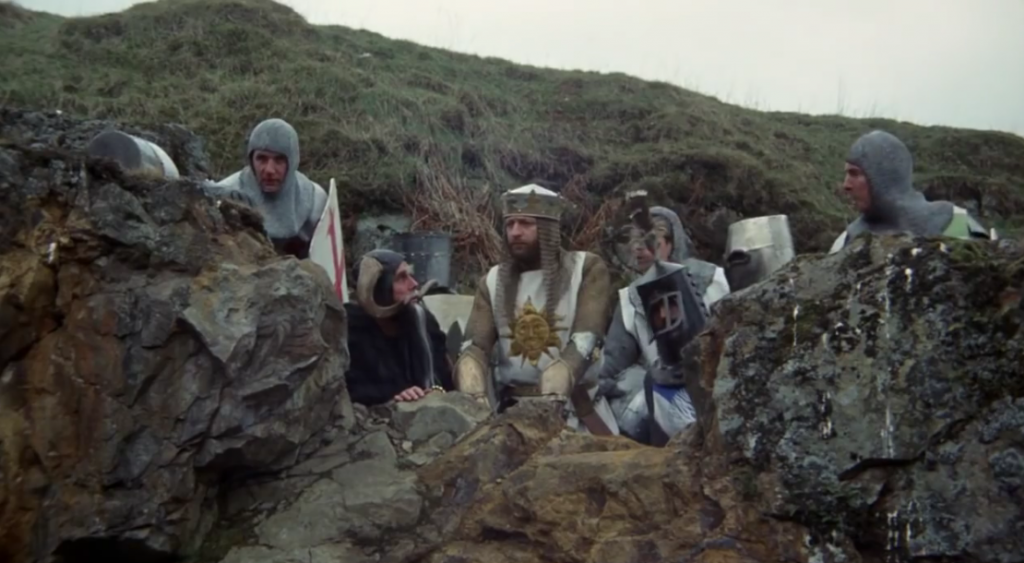
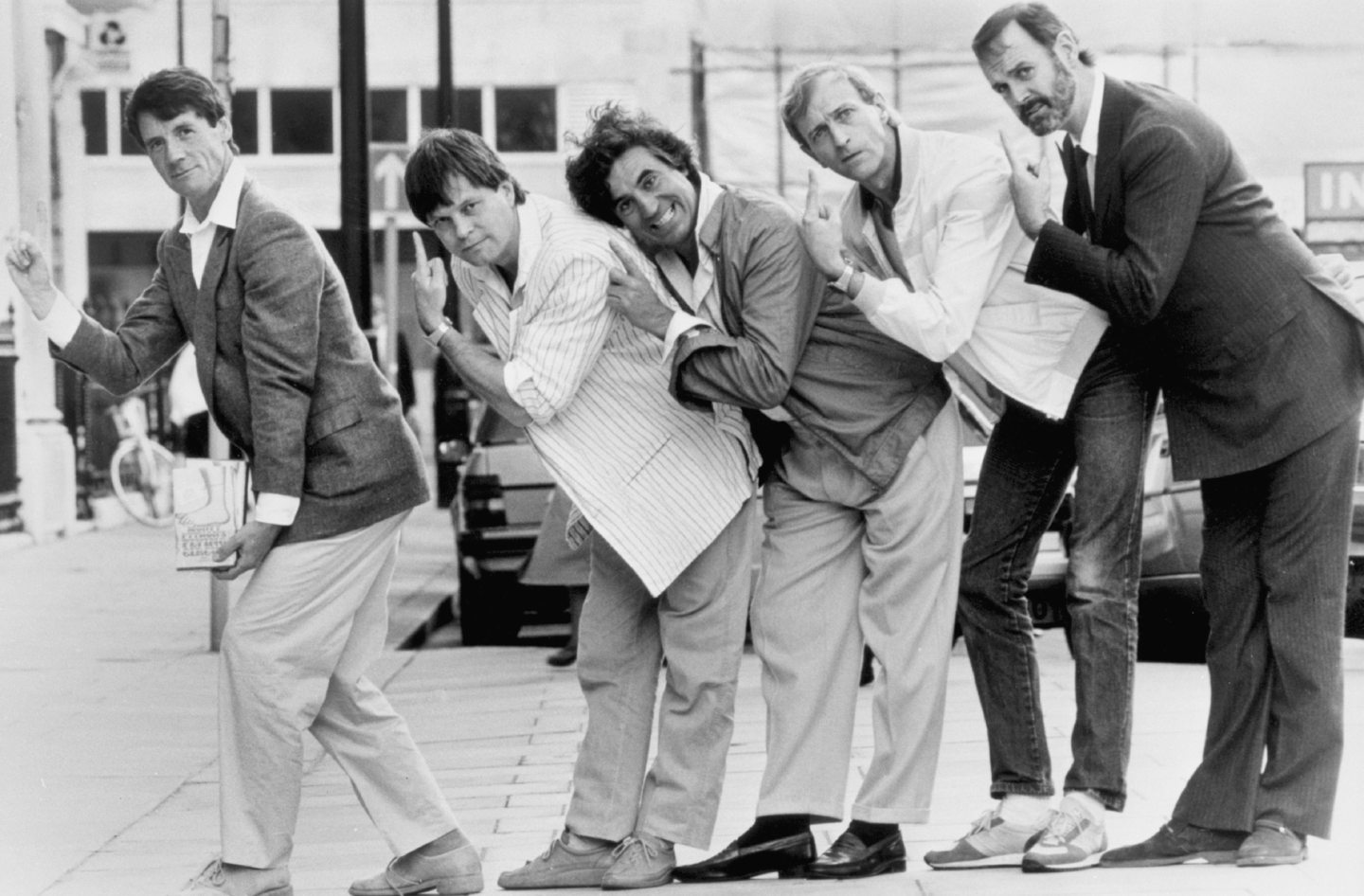
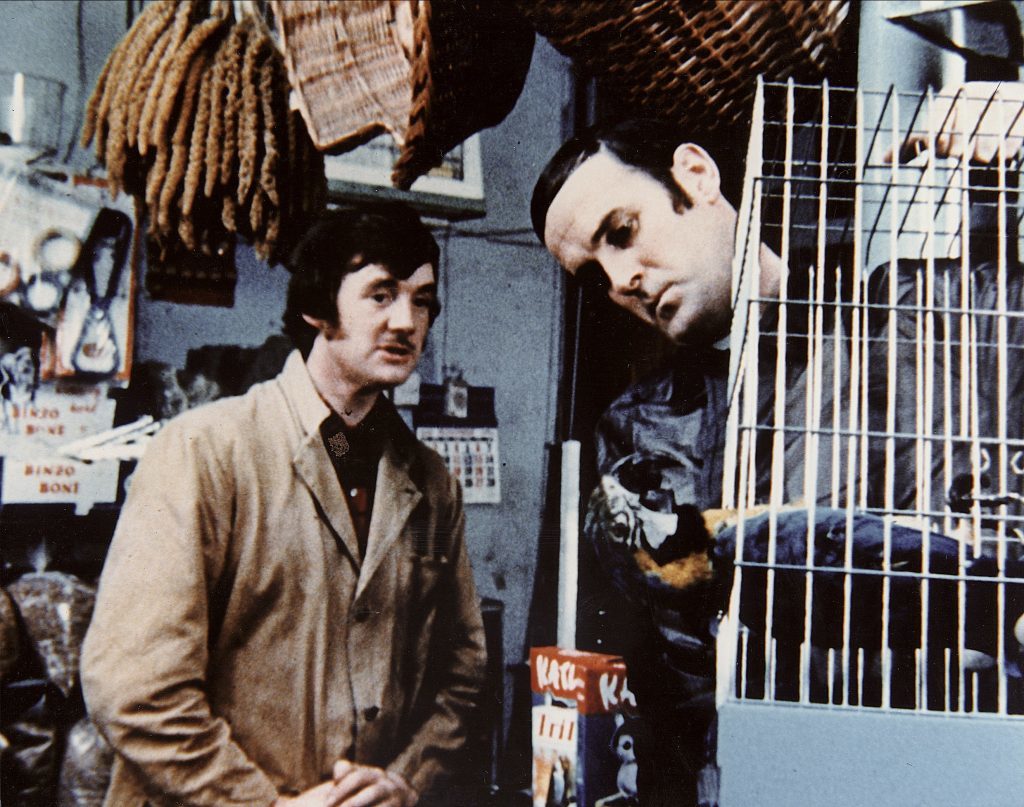










Conversation